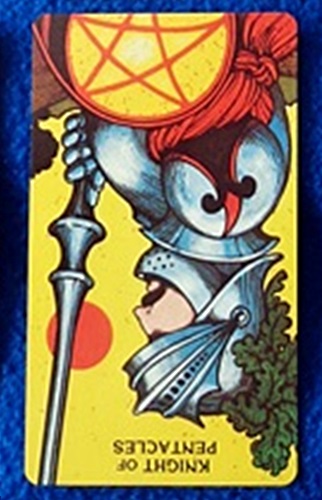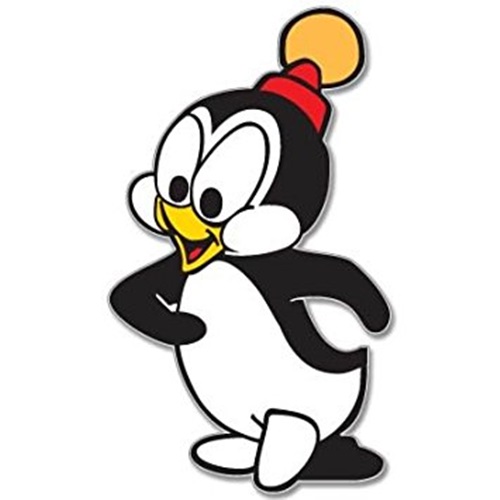Back in the ’80s, computer geeks were always talking about programming code that let a developer (and eventually a user) see the end product of their work on the monitor screen while they were in the middle of creating it. These editors were known by the acronym “WYSIWYG” (“What you see is what you get”), and I’m most familiar with them in the area of word processing (notably WordPerfect, the more muscular predecessor to Microsoft Word) where the on-screen typed page mirrors what the printed page will actually look like. Creation of computer graphics for electronic games was another practical application. For a very short time (so short that many may have missed it entirely), it crept into the common speech as describing unpretentious people who come across as being exactly what they seem to be, no more nor less. (I’m almost positive, though, that the phrase pre-dated the acronym by quite a bit.) It became a synonym for absolute honesty in personal dealings, but was probably too odd to gain much cultural traction.
I sometimes think of this acronym when confronted with tarot decks that have what I call “narrative vignettes” built into their scenic minor – or “pip” – cards. The modern progenitor of this practice is the Waite-Smith (aka “RWS”) deck, where artist Pamela Colman Smith often departed from the esoteric iconography of the Golden Dawn system of interpretation on which Waite based the deck and his companion book, The Pictorial Key to the Tarot. In nearly half the cases – and this is strictly my personal opinion – “what you see is not what you’re supposed to get.” As a lifelong user of the Golden Dawn system in its most potent expression, the Thoth deck created by occultist Aleister Crowley and artist Frieda Harris, I became comfortable with interpreting its “glorified pip cards;” in them, Harris used color, mood and minimal scenic imagery to impart profound meaning in an ingeniously “WYSIWYG” tour de force melding her consummate artistry with Crowley’s esoteric insight. I even observed how close many of them are in “pip” arrangement to the emphatically non-scenic Tarot de Marseille decks. My one-word descriptor for them is “evocative.”
Scenic imagery, whether or not one buys into the story-telling content it offers, invariably invites free-association that in turn fuels imaginative flights of fancy (conveniently labeled “intuition” as a way to excuse its excesses, but I see it more as “inspiration”). When reading with an RWS deck or derivative, I generally ignore the encapsulated story-line and use the hints in the pictures to pull up anecdotal metaphors and analogies that have a bearing on the developing narrative shown in the spread as a whole. These tropes are especially useful when the weaver of the tale (you and me) runs short on “yarn.” The danger – but also the hidden benefit – in this experience is that the seeker is led down a different path than the context of the question would seem to warrant.
Which brings me to the punch line (you didn’t see this coming, did you?) While working with the Morgan Greer deck for my example reading of the “personal tune-up” spread I posted yesterday, I was struck by a visual suggestion in the reversed Knight of Pentacles. What is apparently supposed to be an epaulet on his shoulder magically transformed itself into a cartoon character right in front of my eyes. This was, of course, completely absurd and utterly derailed my attempt to take the card seriously in the reading. I certainly hope this doesn’t happen too often, since I would be hard-pressed to come up with suitable metaphors without getting delirious. (Hmm, the Knight of Pentacles reversed is a serious guy who prefers cold places, eats fish, looks good in a tuxedo, swims well and likes to stand around in groups doing nothing much at all . . . ) I won’t say any more, so see what you think of Chilly Willy sneaking into the tarot. (The stylized “penguin” face on the card almost makes me think Bill Greer was subconsciously inspired by Inuit mask or totem art.)


The phrase does predate the acronym and was already in common enough use in 1971 to inspire this:
As for Chilly Willy, that’s precisely why I DON’T read “intuitively”. What does Chilly Willy say? “It’s cold here”? “Beware of Smedley”? Kiss that client goodbye… XD
It’s still hilarious. But I don’t think the artist was inspired so much by totem art as by Walter Lantz and Tex Avery. We all were.
LikeLiked by 1 person
To be honest, I only knew about Chilly Willy in an incidental way. I was much more inspired by Jay Ward and Bill Scott’s “Rocky & Bullwinkle Show,” with its “Fractured Fairy Tales” and “Peabody’s Improbable History.” I was struck by the design and color scheme in Bill Greeer’s tarot card that seemed to so closely echo the Chilly Willy cartoon character. Others have mentioned that it looks more like a barn owl’s face than a penguin’s. I think it was all entirely accidental, though, which makes it even funnier.
LikeLiked by 1 person
I think you should read it. If something hits you like that then it’s your intuition and there is a message. No doubt about it. Chilly Willy could mean someone getting th cold shoulder treatment or whatever. Did you read it as a message?
LikeLike
I didn’t read it because I couldn’t begin to guess what the Knight of Pentacles would be saying to me as a penguin. An ostrich maybe, but not a penguin.
LikeLiked by 1 person
I totally agree (and many won’t), but I consider Tarot to be a system. (Well, many systems, to be exact, but there is always a system for any worthwhile deck,) There are more variations than there are with Lenormand, and it can get a little loosey-goosey at times, but it’s a system nonetheless with suits and elements and numbers and dignities and yes, if you want to go deep GD, occult Qabalah and paths and whatnot.
All of these things mean something. It’s a life study.
Using the Tarot as a Rorscach and saying “That looks like Chilly Willy!” is amusing, Imputing meaning to that is something I would never, ever even consider.
The works of Wirth, Crowley, et. al. deserve some respect. And are well worth the time spent to see what they were talking about!
LikeLiked by 1 person
For me, “loosey-goosey” also extends to positionless spreads. As I just wrote in another post, I’m not a fan of “throw everything against the wall and see what sticks.” It reminds me too much of a Jackson Pollock painting.
LikeLiked by 1 person
I like them. But I bring a lot of PC/Lenormand to my Tarot, in the sense that the cards modify and interact with each other. I don’t really need “This covers you, this crosses you, this crowns you…” (Though I haven’t jettisoned this stuff entirely – sometimes it’s fun to put on the old music and do the spreads you did back then.) But I agree that “throw everything against the wall and see what sticks” is a potential dog’s breakfast.
There needs to be structure. It can be from named positions, or attendance, but it needs to be there. I’m too lazy to look right now, but Andy has a quote, from Sylvestre, I think – that says the irrational needs to be approached in a rational manner.
I am going to see the future and the hidden agendas of people with pictures on pasteboard. This, in itself, is nutso. I need rules. 😉
LikeLiked by 1 person